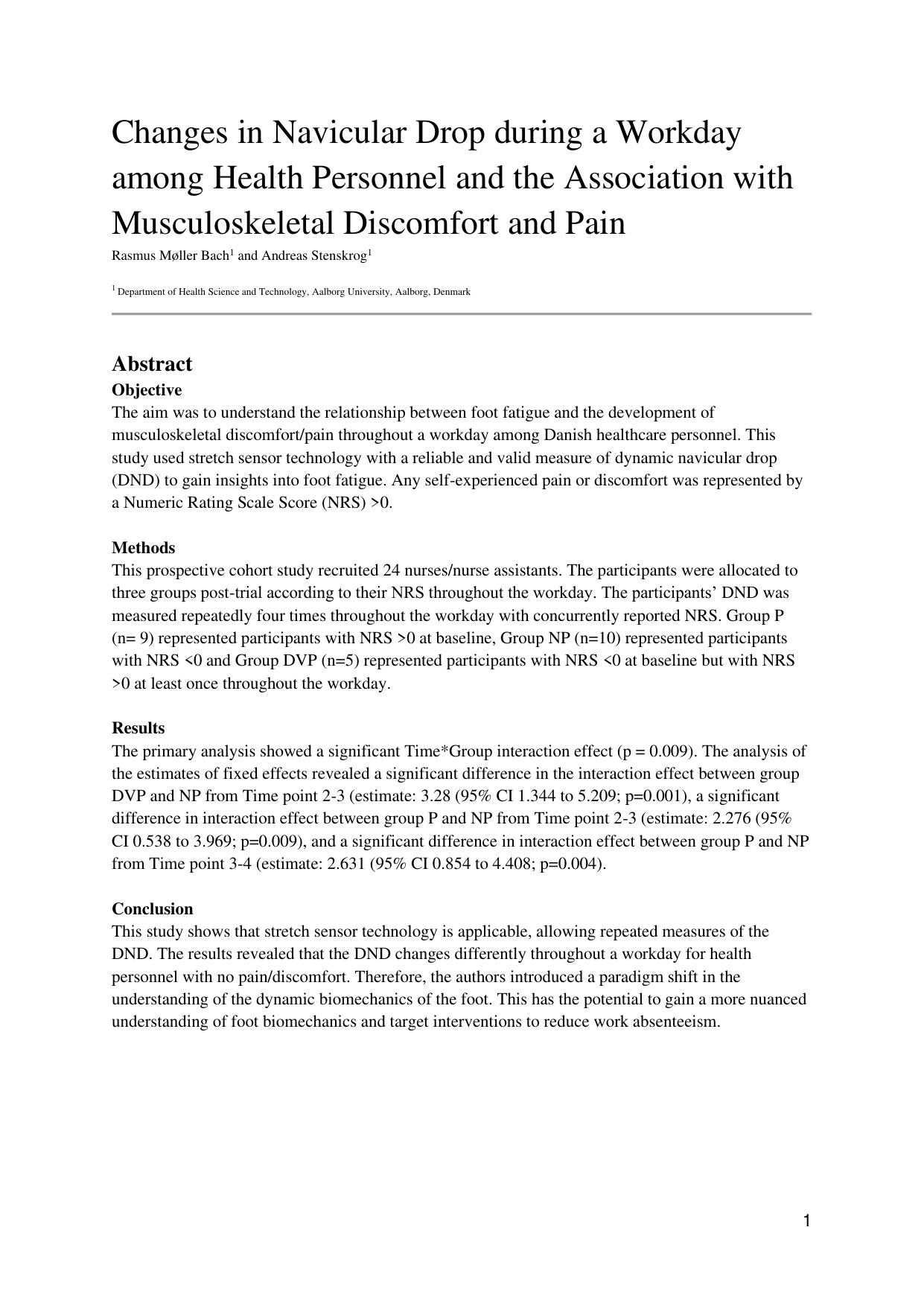
Changes in Navicular Drop during a Workday among Health Personnel and the Association with Musculoskeletal Discomfort and Pain
Authors
Term
4. term
Education
Publication year
2024
Submitted on
2024-05-28
Pages
13
Abstract
Abstract Objective The aim was to understand the relationship between foot fatigue and the development of musculoskeletal discomfort/pain throughout a workday among Danish healthcare personnel. This study used stretch sensor technology with a reliable and valid measure of dynamic navicular drop (DND) to gain insights into foot fatigue. Any self-experienced pain or discomfort was represented by a Numeric Rating Scale Score (NRS) >0. Methods This prospective cohort study recruited 24 nurses/nurse assistants. The participants were allocated to three groups post-trial according to their NRS throughout the workday. The participants’ DND was measured repeatedly four times throughout the workday with concurrently reported NRS. Group P (n= 9) represented participants with NRS >0 at baseline, Group NP (n=10) represented participants with NRS <0 and Group DVP (n=5) represented participants with NRS <0 at baseline but with NRS >0 at least once throughout the workday. Results The primary analysis showed a significant Time*Group interaction effect (p = 0.009). The analysis of the estimates of fixed effects revealed a significant difference in the interaction effect between group DVP and NP from Time point 2-3 (estimate: 3.28 (95% CI 1.344 to 5.209; p=0.001), a significant difference in interaction effect between group P and NP from Time point 2-3 (estimate: 2.276 (95% CI 0.538 to 3.969; p=0.009), and a significant difference in interaction effect between group P and NP from Time point 3-4 (estimate: 2.631 (95% CI 0.854 to 4.408; p=0.004). Conclusion This study shows that stretch sensor technology is applicable, allowing repeated measures of the DND. The results revealed that the DND changes differently throughout a workday for health personnel with no pain/discomfort. Therefore, the authors introduced a paradigm shift in the understanding of the dynamic biomechanics of the foot. This has the potential to gain a more nuanced understanding of foot biomechanics and target interventions to reduce work absenteeism.
Keywords
Documents
